Question
Who among the following sits third to the right of
A? Study the following information carefully and answer the questions below: There are nine persons i.e. A, B, C, D, E, F, G, H and I are sitting in a triangular table such that three of them are sitting at the corner of the table and two persons are sitting on each side of the table. Some of them are facing inside the table and some are facing outside the table. Not more than two persons facing the same direction are adjacent to each other. F sits second to the left of H who sits at the corner of the table. Only one person sits between F and C who faces inside the table. D sits at one of the corner of the table but she is not an immediate neighbour of C. I sits third to the left of C. A is an immediate neighbour of H and both are facing the opposite direction to each other. E does not share the side with I and sits second to the left of G who does not sit at the middle of the table. B sits third to the left of I and both are facing the same direction. E faces the same direction as D faces which is opposite to that of F.Solution
F sits second to the left of H who sits at the corner of the table. As per this statement, there are two possible cases and the arrangement will look like this: 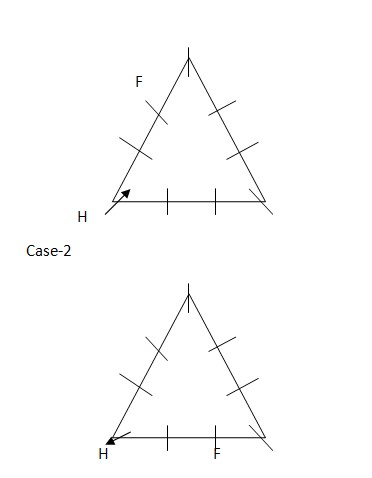 Only one person sits between F and C who faces inside the table.
Only one person sits between F and C who faces inside the table. 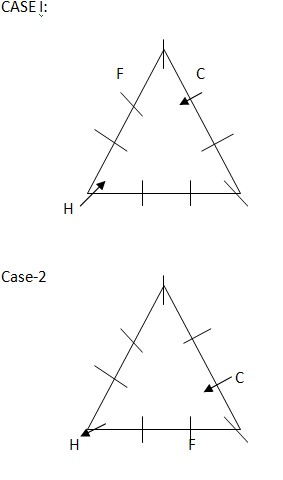 D sits at one of the corner of the table but she is not an immediate neighbour of C.
D sits at one of the corner of the table but she is not an immediate neighbour of C. 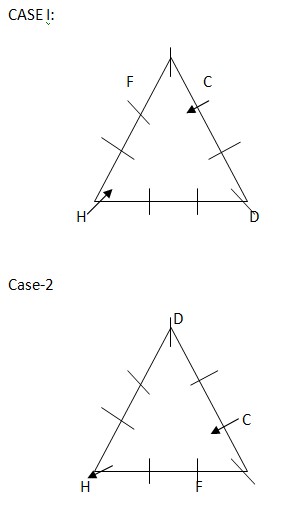 I sits third to the left of C.
I sits third to the left of C. 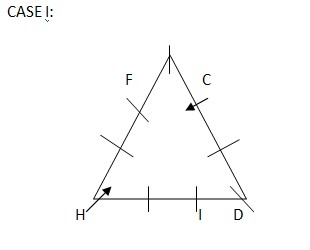 Case-2
Case-2 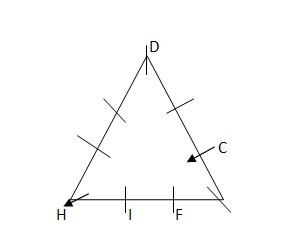 A is an immediate neighbour of H and both are facing the opposite direction to each other. As per this statement, CASE I will further get split into one more case and the arrangement will look like this:
A is an immediate neighbour of H and both are facing the opposite direction to each other. As per this statement, CASE I will further get split into one more case and the arrangement will look like this: 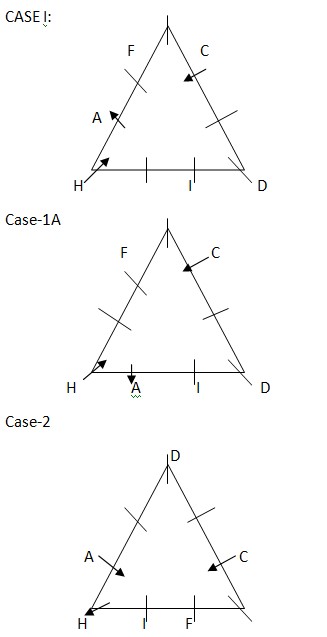 E does not share the side with I and sits second to the left of G who does not sit at the middle of the table. B sits third to the left of I and both are facing the same direction. As per this statement, CASE I and CASE I (A) will get eliminated and we will continue with CASE II and the arrangement will look like this:
E does not share the side with I and sits second to the left of G who does not sit at the middle of the table. B sits third to the left of I and both are facing the same direction. As per this statement, CASE I and CASE I (A) will get eliminated and we will continue with CASE II and the arrangement will look like this:  E faces the same direction as D faces which is opposite to that of F. As per this statement, the final arrangement will look like this: CASE II:
E faces the same direction as D faces which is opposite to that of F. As per this statement, the final arrangement will look like this: CASE II: 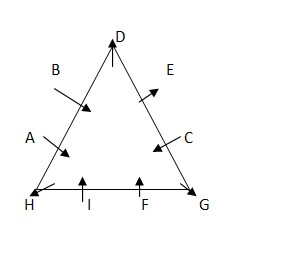
Four letter-clusters have been given, out of which three are alike in some manner and one is different. Select the letter-cluster that is different.
Three out of the following four words are similar in meaning. Find the word that is different from the rest.
Odd one out
Three of the following four options are alike in a certain way based on the Alphabetical series. Which one among the following doesn’t belong to the g...
Three of the following four letter-clusters are alike in a certain way and one is different. Pick the odd one out.
Four number-pairs have been given, out of which three are alike in some manner and one is different. Select the number pair that is different.
Find the odd one out from the following options.
Find the odd one out from the following options.
Select the option in which the letters are not related in the same way.
Three of the following four are like in a certain way and one is different. Pick the odd one out.


